
MFJ-64xx Instruction Manual Balanced Line Four Element Colinear Array
1
INTRODUCTION
The Franklin Array exhibits good gain (~4.5 dB), and delivers better than average signals, even
when hung at only a quarter wavelength (low). This is possible since the array has no vertical
component or vertical directivity, while capture area, and horizontal directivity and gain increase
substantially with the 4-element collinear configuration. The MFJ-64xx arrays must use fully
balanced tuners (MFJ-974H, 974, and 971 series) to tune, apply power to the array, and match
the system to coax input. Use with tuner on other bands is possible, but the Franklin Array
configuration is only on the selected band: 6415, 6417, or 6420.
A further consideration is that this antenna is also quiet, when compared to inverted “V’s” (and
verticals, especially). A reduction of 2 – 3 “S” units of noise may make the difference in that
DX contact you can now hear above the noise!
The added gain means your array presents an effective power gain of “3.” This means 100 watts
applied results in the effective radiated power of ~300 watts! What if you apply 1500 watts out?
Pretty good results for “hanging wire!”
Capture area is another factor in the good performance of the array; The MFJ-64xx has four
times the capture area of a doublet, or inverted vee-type “droopy doublet.”
Once connected and tuned, you’ll find the MFJ 64xx Collinear Array presents a low SWR across
the entire band. However, it only functions as a Franklin Array on “one-band” depending which
band you have purchased. Figure 1 is a generic illustration of the antenna with its shorted stubs
and balanced feed line.
Warnings
• Always mount or install antennas beyond the reach of adults and
children. Make certain your antenna installation meets RF
exposure guidelines
• Contact with exposed parts of this antenna system can cause RF
burns and other injuries.
• Constructing or erecting antennas where they may contact
electrical power lines can result in injury or even death

MFJ-64xx Instruction Manual Balanced Line Four Element Colinear Array
1
Figure 1 Franklin Collinear Array
System Description
Dimension “L1” represents a ½ wave, “L2” represents slightly less than ½ wave, and “F” a ¼ wave, which, in this case is a ¼ wave
stub, used for phase-shifting. The antenna is a “broadside array,” and is bi-directional perpendicular to the run of the wire. A pair of
these antennas at right angles (NE/SW; NW/SE for example) can provide world-wide coverage.
If height is a constraint, this antenna functions better than average at even a bit less than a ¼ wavelength above ground/structure.
However, it really performs best if “hung” at a ½ wave; up to ¾ wave. Higher than that provides diminishing return.
Especially important is keeping the symmetry of the antenna in reference to its ½ wave radiators. They must not sag more than a foot,
with pulled-tight being the best configuration. The feedline can be pulled away at an angle, and some twisting is OK. Stubs should be
tied-off to keep symmetry and damage-free from wind action.
L1
L1
F
F
L2
L2
Line to
Balanced
Tuner

MFJ-64xx Instruction Manual Balanced Line Four Element Colinear Array
1
SYSTEM DESCRIPTION
Dimension “L” represents a ½ wave, and “F” represents a ¼ wave, which, in this case is a ¼
wave stub, used for matching and phase-shifting. The MFJ 64xx Collinear Array is a “broadside
array,” and is bi-directional perpendicular to the run of the wire. A pair of these antennas at
right angles (NE/SW; NW/SE for example) can provide world-wide coverage. And, when used
with a suitable antenna switching system (Ameritron RCS-10), switching is convenient and fast,
with only a single-line feed into the shack. Or, you can run both coaxial lines into the shack, and
effect switching with a wall-mounted switching unit (MFJ 1700).
If height is a constraint, this antenna functions better than average at even a bit less than a ¼
wavelength above ground/structure. However, it really performs best if “hung” at a ½ wave; up
to ¾ wave. Higher than that provides diminishing return.
Especially important is keeping the symmetry of the antenna in reference to its ½ wave radiators.
They must not sag more than a foot, with pulled-tight being the best configuration. The
feedline/stub can be “bent” at the bottom, or pulled away at an angle, and some twisting is OK.
Practically, it is best to let it hang straight down and tie it off with rope to avoid lashing about in
windy conditions.
ASSEMBLY AND INSTALLATION
Warning: Never Install an antenna where contact with electrical power lines
is possible. Serious injury or Death may occur.
The MFJ 64xx 4-Element Collinear Array ships assembled and ready to install. Carefully
“unroll” the elements; do NOT “slinky” them, and start with the “outer” elements. The
lengths of the antenna wires and stubs are quite critical and should not be changed. Use Nylon
ropes to support the ends of the antenna from suitable structures or trees. If you are using trees
for end supports, be sure to allow enough slack, or use some type of pulley and counterweight
system to prevent the antenna or rope from breaking when trees sway. Suspend the antenna with
at least a 50-pound working load nylon rope or equivalent strength weather-resistant non-
metallic rope. Never use wire or wire core rope to support the ends of any antenna. Attach the
rope to the end insulators through the empty holes. Try to keep the array ends at least five feet
from metallic supports (towers, poles, etc.).
The MFJ 64xx 4-Element Collinear Array requires two tie-off points spaced far enough to
accomodate their width/length, and a height at least close to ¼ wavelength. When using two
antennas, try to locate the antennas in an “L” or “T” configuration (at right angles) as illustrated
in Figure 2.

MFJ-64xx Instruction Manual Balanced Line Four Element Colinear Array
2
(Looking Down From Above)
Figure 2 Two Antennas @ Right Angles (Suggested Optimum)
This right angle configuration provides world-wide coverage in most instances. However, your
individual site may include orientation(s) that only require you to follow the instructions for
single antenna installation, such as locating each antenna array at disassociated points on the site.
We hope you will benefit from their ease of installation, efficiency, and quality construction.
MAINTENANCE
The MFJ 64xx Two Element Colinear Array is made of heavy-duty materials and should
withstand normal climates for many years.
TECHNICAL ASSISTANCE
If you have any problem with this unit first check the appropriate section of this manual. If the
manual does not reference your problem or your problem is not solved by reading the manual,
you may call MFJ Technical Service at 662-323-0549 or the MFJ Factory at 662-323-5869.
You will be best helped if you have your unit, manual and all information on your station handy
so you can answer any questions the technicians may ask.
You can also send questions by mail to MFJ Enterprises, Inc., 300 Industrial Park Road,
Starkville, MS 39759; by Facsimile (FAX) to 662-323-6551; or by email to
[email protected]. Send a complete description of your problem, an explanation of
exactly how you are using your unit, and a complete description of your station.
3 SUPPORTS
1
2
1
2
4 SUPPORTS

MFJ-64xx Instruction Manual Balanced Line Four Element Colinear Array
3
DISCLAIMER
Information in this manual is designed for user purposes only and is not intended to supersede
information contained in customer regulations, technical manuals/documents, positional
handbooks, or other official publications. The copy of this manual provided to the customer will
not be updated to reflect current data.
Customers using this manual should report errors or omissions, recommendations for
improvements, or other comments to MFJ Enterprises, 300 Industrial Park Road, Starkville, MS
39759. Phone: (662) 323-5869; FAX: (662) 323-6551. Business hours: M-F 8-4:30 CST.
-
 1
1
-
 2
2
-
 3
3
-
 4
4
-
 5
5
MFJ 6417 Owner's manual
- Type
- Owner's manual
Ask a question and I''ll find the answer in the document
Finding information in a document is now easier with AI
Related papers
Other documents
-
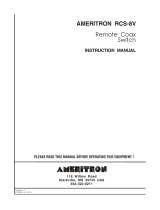 AMERITRON RCS-8VNLX User manual
AMERITRON RCS-8VNLX User manual
-
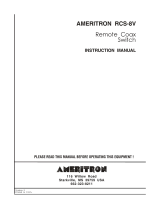 AMERITRON RCS-8V User manual
AMERITRON RCS-8V User manual
-
Spin Master Slinky User manual
-
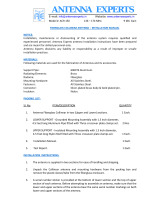 Antenna Experts AC9-150 Installation guide
Antenna Experts AC9-150 Installation guide
-
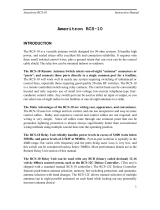 AMERITRON RCS-10X User manual
AMERITRON RCS-10X User manual
-
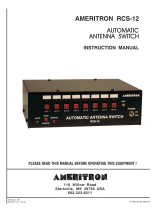 AMERITRON RCS-12 User manual
AMERITRON RCS-12 User manual
-
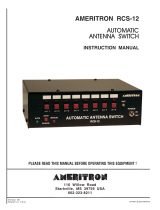 AMERITRON RCS-12X User manual
AMERITRON RCS-12X User manual
-
Hygain AV-18VS User manual
-
AudioQuest SLINKYMICRO02 Datasheet
-
Hygain AV-620 User manual




















